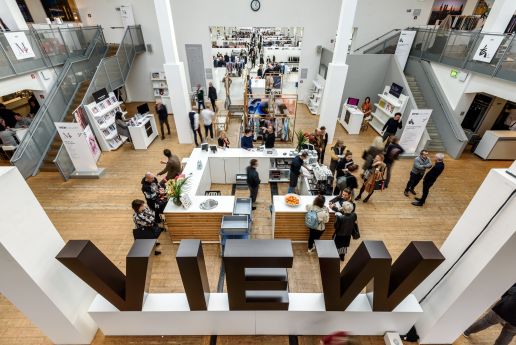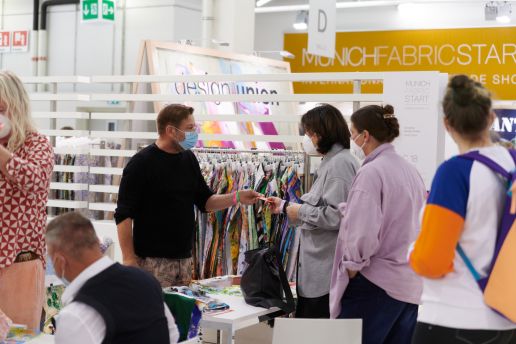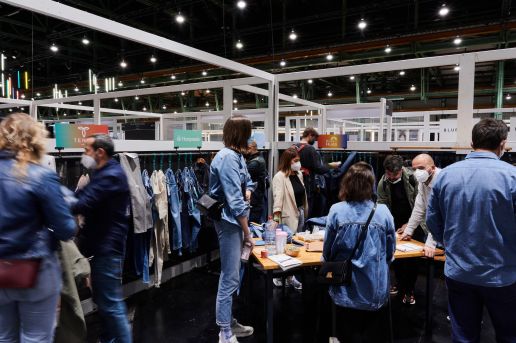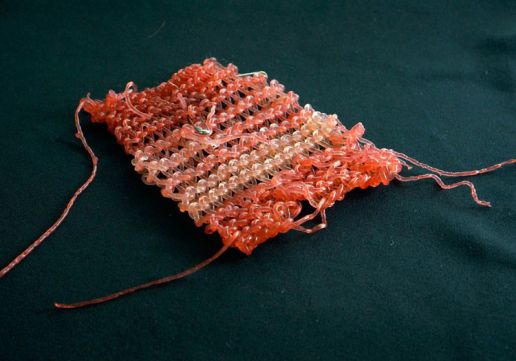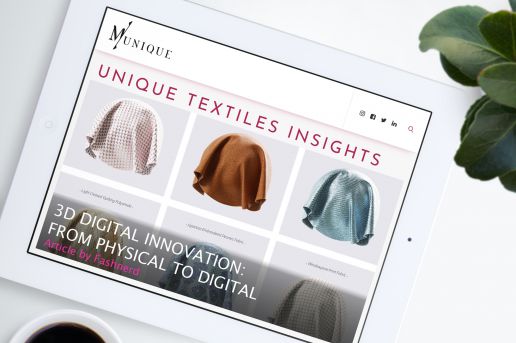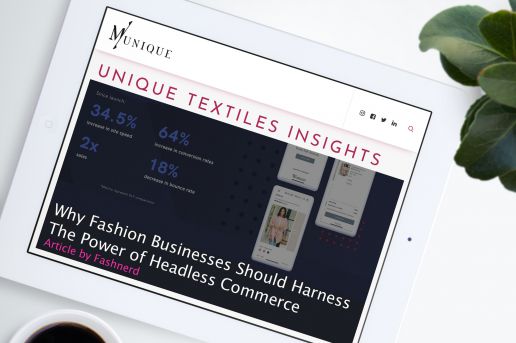Keyhouse
Sustainable Innovations #4: "Sunkolor" by Panorama Fabrics
With climate change still gathering momentum, the intensity of the sun’s invisible UV rays is also increasing. The problem: the intensity is not visible to the eye. The result: sunburn and damage to our skin that sometimes only appears years later which makes it all the more important to protect our important organ.
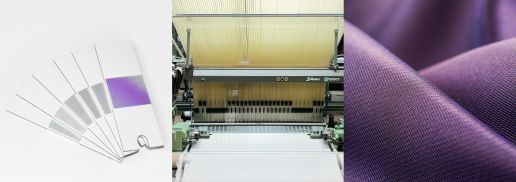
Exactly this is possible with Sunkolor. The material helps to visually perceive sun exposure and to establish a healthy relationship with it as a result. The technology Panorama Fabrics, the material driven Design Studio from Berlin, manages to make UV rays visible. For this purpose, Sunkolor yarns, which are produced in Germany, are woven into textiles.
When exposed to sunlight, the colour of the material changes thus indicating the dangerous UV index range. The change of colour makes it immediately clear once the situation becomes critical. In the first step, the yarns will be attached in labels to hiking backpacks. In the long term, a variety of different or outdoor garments will be made from this yarn.
The vision:
Create new tools to adapt in a changing environment caused by climate change.
Panorama Fabrics studio aims to contribute with its own products and pioneering designs to highlight the possible interaction between textiles, humans and our climate. Research is being carried out on innovations to make more people aware of the effects of climate change and at the same time support them in dealing with it. The two founders, Gabriela Kapfer and Karina Wirth, share a fascination for different materials and a passion for interdisciplinary collaboration, which enables them to create something new and progressive together.
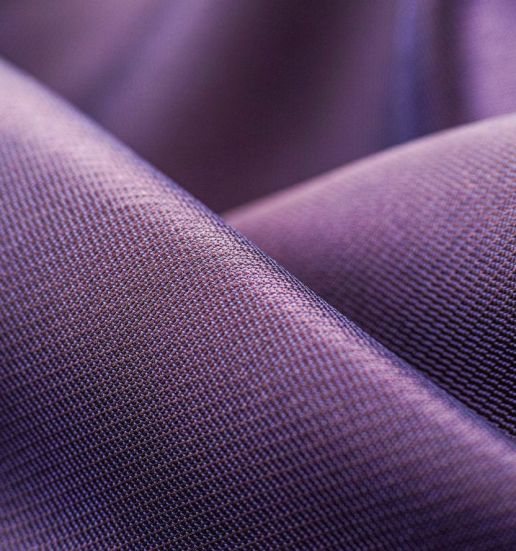
“Sunkolor makes the invisible visible to create awareness.”
– Gabriela Kapfer & Karina Wirth
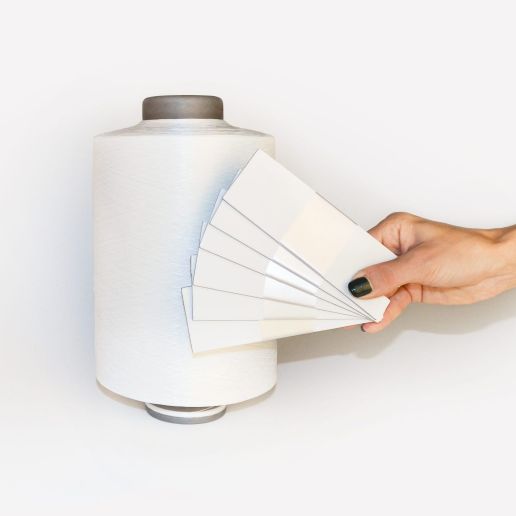
Please find more info about SUSTAINABLE INNOVATIONS in this interview with Simon Angel, curator of the Sustainable Innovations Forum and in the articles about further projects:
Interview about Pre-Creation, -Action and -Connection in our industry >>
Offcuts collection by Studio Popopo >>
Textile Inventions You Need To Be Acquainted With In 2022
Textile Inventions You Need To Be Acquainted With In 2022
(If You Are Not Already)
AN INDUSTRY INSIGHT BY FASHNERD FOUNDER MUCHANETA KAPFUNDE.
The race to digitise the textile sector is expected to continue to gain momentum throughout 2022. However, with sustainability still a key theme, the good news is that game-changing innovations are helping a very traditional industry recognise business opportunities that push towards a fundamental shift in industry practices and any future developments.
Reimagining the Textiles System With a New Mindset
No longer held back by conventional processes, more and more textile manufacturers, suppliers, buyers, and designers are now transitioning towards a textile system that allows them to harness better economic, societal, and environmental outcomes. In addition, prioritising the application of new technologies has helped the textile industry take those first steps of progress towards adopting new business models, technological innovation, and radical collaboration.
“Our success depends not only on the work within our own value chain but on disruptive partnerships across a broader textile production and manufacturing ecosystem,” stated Cyrus Wadia, VP Sustainable Business and Innovation at Nike, in the Ellen MacArthur Foundation report “A New Textiles Economy: Redesigning Fashion’s Future”.
As technology continues to have a significant impact on the textile industry, in 2022, make sure you keep an eye on the following innovations from these three game-changing companies:
1. Kelp – One Of The Most Renewable Natural Resources: Algiknit
In the business to make textile production more environmentally conscious, Algiknit offers material options that perform as well as conventional materials.
“The yarn we’re producing today has the look and feel of the natural fibres consumers are familiar with, plus all the makings of a no-compromise conscious material,” said Aaron Nesser, co-founder and CTO of AlgiKnit, in a statement.
Staying ahead of the curve in fabric innovations, Algiknit could effectively bring kelp-based yarn into the mainstream. The startup is currently poised to scale the production of eco-conscious yarns for use by forward-thinking global fashion brands.
With Kelp considered one of the most renewable natural resources globally, the Brooklyn-based material-maker of carbon-neutral, toxic-free textiles has spent the past four years developing technology to produce yarns on a commercial scale. They hope that they will be able to scale production to a point where they will be able to meet growing material demand in time.
2. Freshwater-free Textile Fibres, The Next Alternative: SaltyCo
UK startup, SaltyCO, has come up with freshwater-free textile fibres. Hoping to establish an alternative to freshwater-intensive cotton cultivation, SaltyCO is on a mission to tackle the side effect of wasteful freshwater use by rethinking the system and installing a new category in sustainable textile production.
Acknowledging that there is no single solution to “sustainability”, SaltyCO’s vision is to build a planet-healing supply chain that begins with an approach to regenerative agriculture. Hoping to create the most impact by sourcing their plant material, the materials science company has so far found a suitable salt-tolerant plant for the textile supply chain. They are now researching regenerative cultivation techniques and textile products. The outcome has been BioPuff, a plant-based fibre fill produced in SaltyCO’s laboratory in Scotland.
An alternative to animal and petroleum-based products, BioPuff is made of pure cellulose and has been reported to reduce petroleum by 70% in every jacket impact and save up to 25 litres of fresh drinking water.
3. Built with Biology, Not Oil: Biofabricate
Do you know that we are at the dawn of a new age where we can biodesign and biofabricate? No longer confined to small-scale experiments, biomaterials have garnered interest from well-known brands, like Adidas and Hermès, looking for plant-based alternatives to petroleum.
Recognising the potential of ‘Living Factories’ like Mycelium, Bacteria, Yeast and Algae, is Biofabricate. They are a startup that believes that a sustainable material world is built with biology, not oil. Recognising that there are no shortcuts, Suzanne Lee, founder and CEO of Biofabricate, believes that patience and tenacity by the industry should be a requirement.
“This can be a struggle for many designers – who like fast outcomes. But unfortunately, biology doesn’t work like that”, explained Lee when interviewed by Nextnature.net.
As a new generation of biofabrication and cell agriculture startups continue to set the standard, Biofabricate has become the go-to for those looking to bridge design with biotech intelligently.
In the current landscape, textile inventions are setting the standard by driving the textile industry to understand the facts and participate in the solutions. But, in the end, material innovation is a constant journey, one you should already be on if you aren’t already.
Are you interested in more indepth facts and figures of the new textile economy?
Check out FashNerd.com to follow the journey of the industry or read one of the following blog articles:
Antimicrobial Textiles, Hero or Hype?
The New Textiles Economy, A Catalyst For Transformation?
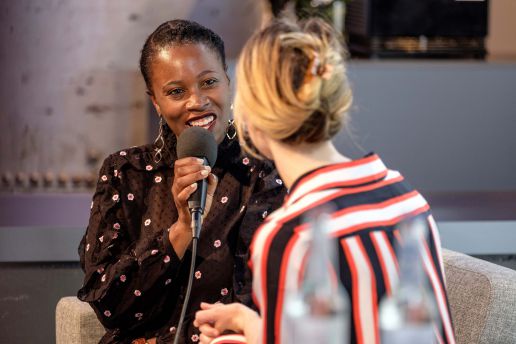
ABOUT THE AUTHOR
Founding editor-in-chief of FashNerd.com, Muchaneta has worked in the fashion industry for over 14 years. She is currently one of the leading influencers speaking and writing about the merger of fashion with technology and wearable technology.
Muchaneta Kapfunde | editor@fashnerd.com
KEYHOUSE's CLO Virtual Fashion stands for future vision and collaborative collection development
No MUNICH FABRIC START without our Innovation Hub KEYHOUSE! Although our shows unfortunately could not take place physically at the end of January, we would like to give our long term partners and exhibitors the chance to present their developments for Spring.Summer 23 online.
As a digital specialist from Munich, CLO Virtual Fashion stands for future vision and collaborative design development.
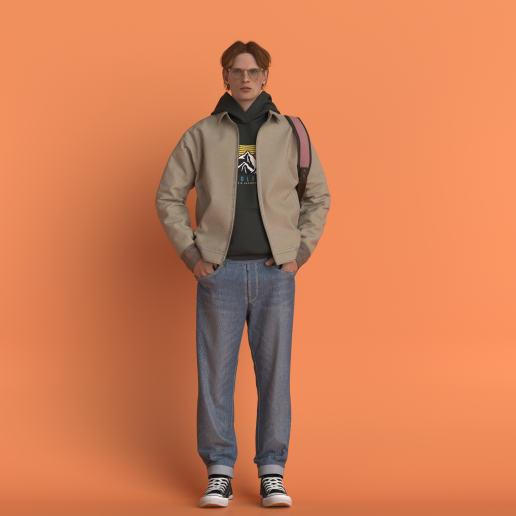
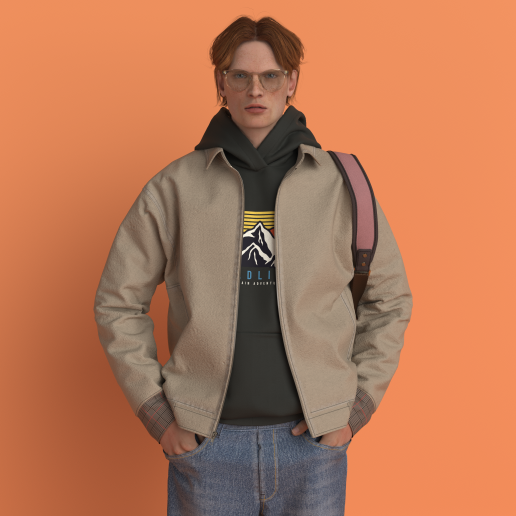
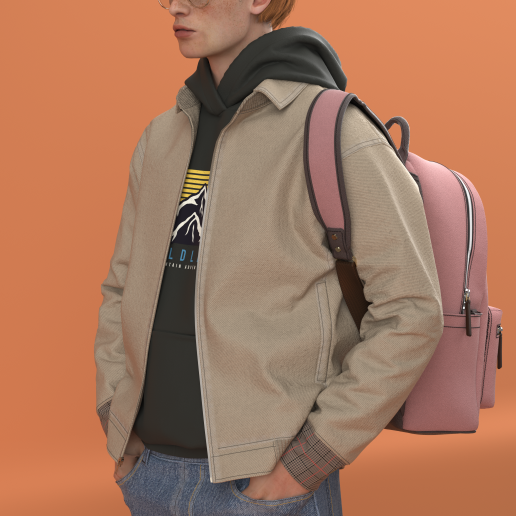
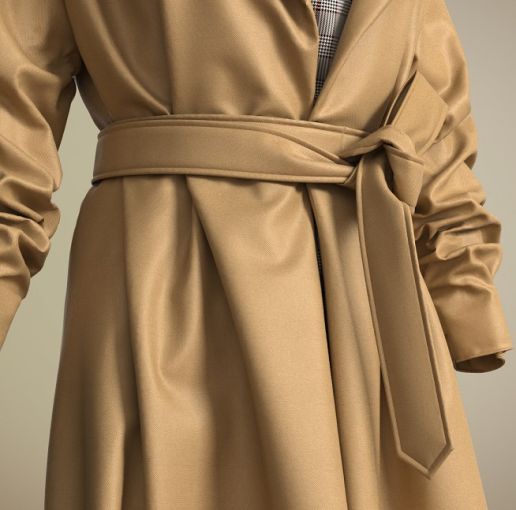
CLO Virtual Fashion is leading the market by digitally merging, consolidating, and converging all components related to digital garments. From 3D garment design software, digital asset management and collaborative design development platform, to consumer facing services such as virtual fitting on e-commerce, all of CLO’s products and services provide users the most efficient product development experience within the garment industry.
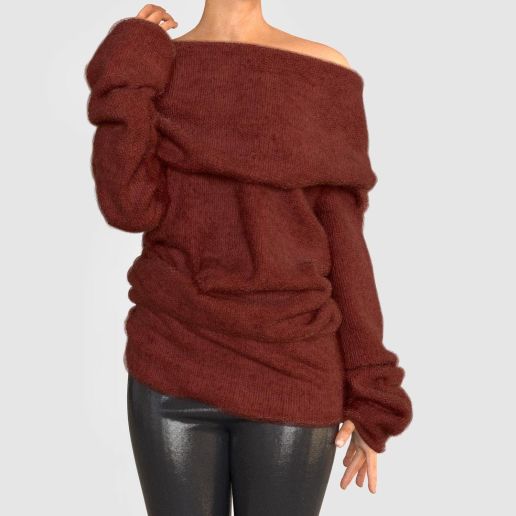
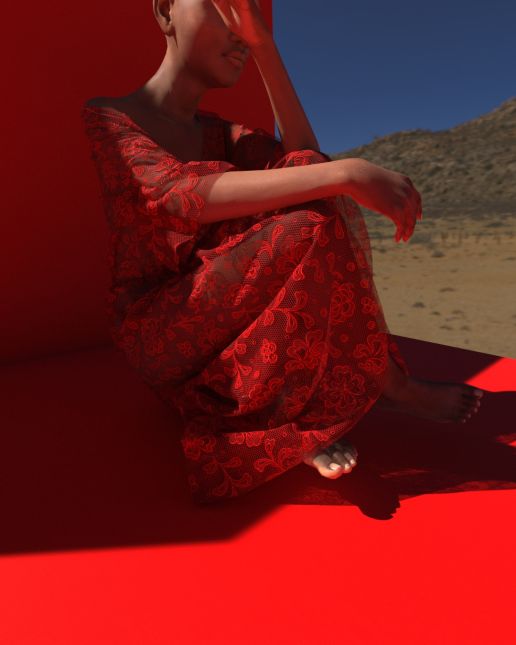

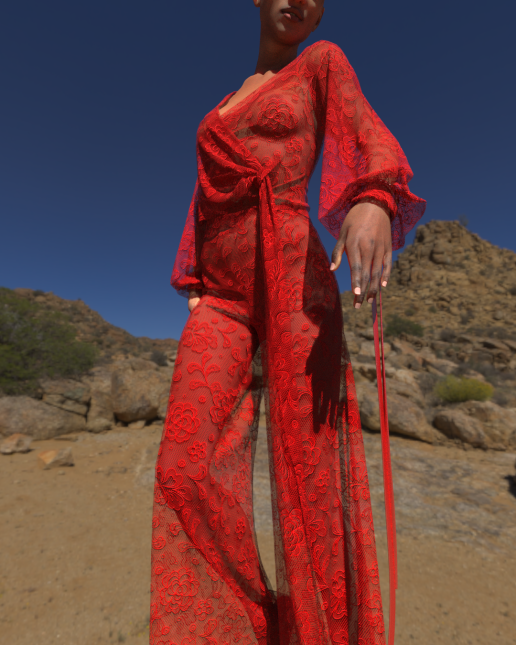
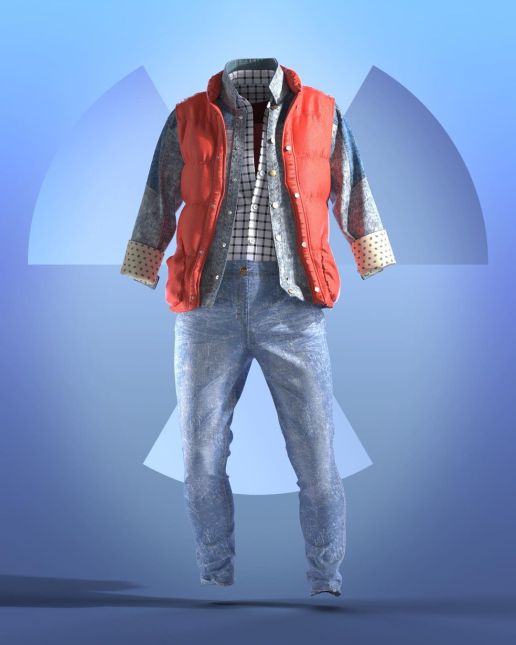
“Step beyond design.
Streamline your design development process with the power of true-to-life 3D garment simulation.
Show your creativity with CLO Virtual Fashion.”
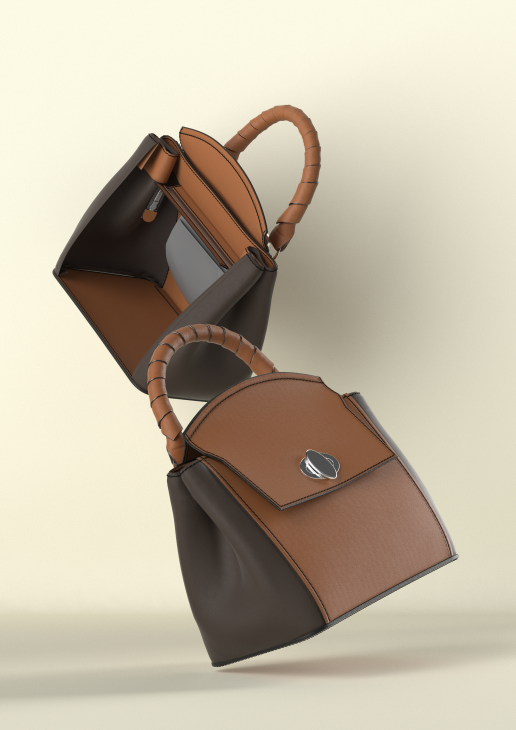
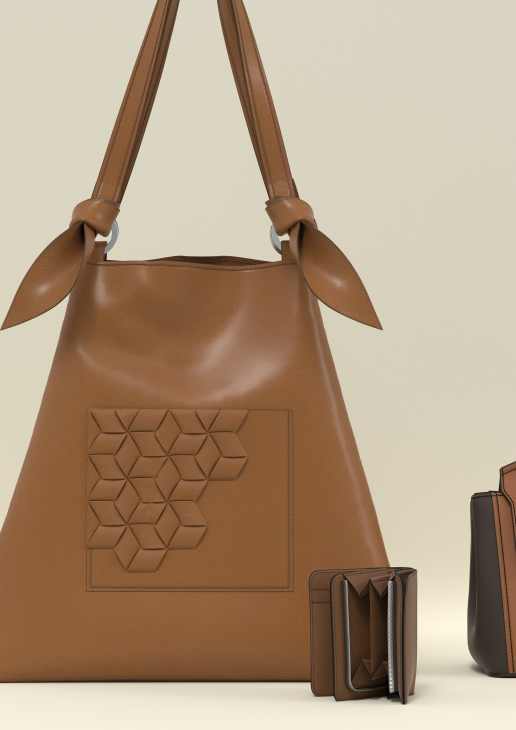
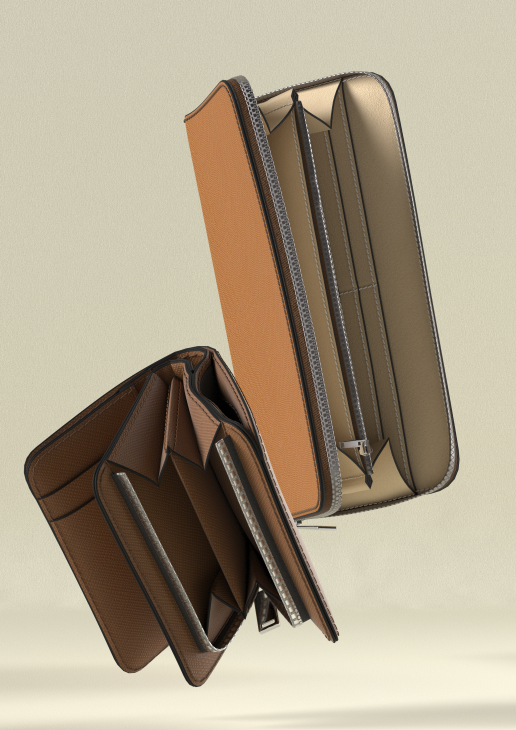
More information about CLO’s futuristic 3D Design Process can be found in this blog article:
Release of the new CLO version 6.0 >>
————————————————————————–
Experience further innovations and forward-looking developments at the first independent BLUEZONE X KEYHOUSE Show from 3 – 4 May 2022.

BLUEZONE X KEYHOUSE will welcome you in May
The last few weeks have been dominated by the finalisation of our upcoming shows. And we are very proud of the current, impressive status: Thanks to the enormous support from the industry, around 700 suppliers from 33 countries are registered for MUNICH FABRIC START, including more than 90 international denim suppliers for BLUEZONE.
At the same time, the very dynamic situation with the ever-increasing measures for events and the rapidly increasing infection numbers all around Europe make it difficult for us to take the next steps to be able to welcome you again in just a few weeks.
It is with a very heavy heart that we therefore feel obliged to cancel
MUNICH FABRIC START Spring.Summer 23 from 25th – 27th January 2022.
BLUEZONE can’t happen in January 2022 as well, but the good news is that we are going to realise a stand-alone denim and innovation concept from 3 – 4 May 2022 on the Zenith grounds in Munich:
BLUEZONE X KEYHOUSE
“As trade fair organisers, in addition to the major economic risk, we also have a high social responsibility. Decisive for this serious decision are various realistic scenarios that could occur in the coming weeks depending on the situation: a very short-term ban on events, further restrictions for events or additional travel restrictions. In addition, of course, the health and safety of all participants is always our top priority. Due to current developments, we unfortunately have no other option than to cancel MUNICH FABRIC START. At the same time, we see a great opportunity in being able to offer a physical platform for denim and innovations in Munich from 3 – 4 May 2022: BLUEZONE X KEYHOUSE. There, you will find an impressive new format in the style of a blue festival with currently over 90 exhibiting denim mills and innovators.”
Sebastian Klinder, Managing Director Munich Fabric Start

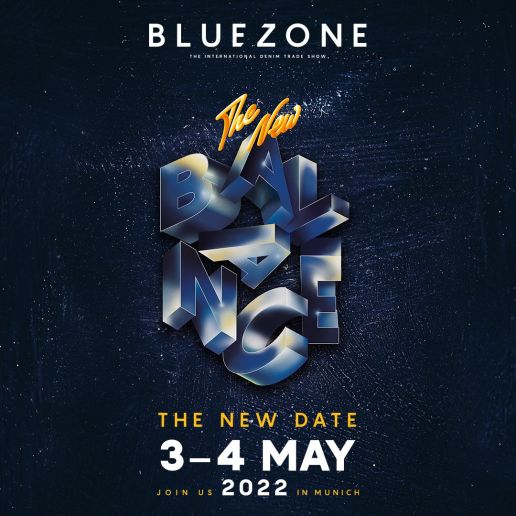
STAY TUNED: We look forward to telling you more about our BLUEZONE X KEYHOUSE concept soon & can’t wait to finally reunite the Blue Community in May again!
At the same time, we will of course keep you informed about news and the latest collections from our exhibitors via our M/UNIQUE blog and Social Media & you will soon be able to purchase our trend forecast for Spring.Summer 23.
Now we wish you a nice pre-Christmas season & above all: stay healthy!
Your MUNICH FABRIC START & BLUEZONE team
SAVE THE DATES - NEXT SHOWS

5 Tech Trends Reshaping Apparel Manufacturing
5 TECH TRENDS RESHAPING THE FUTURE OF APPAREL MANUFACTURING
AN INDUSTRY INSIGHT BY FASHNERD FOUNDER MUCHANETA KAPFUNDE.
Transforming textile manufacturing and reshaping how the industry does business, new technologies are not only being adopted; they are trending. With various innovations on offer, here are the top five tech trends that have proven popular in helping apparel manufacturers create greater efficiency and build better relationships between producers, suppliers and customers.
1. Digitisation
It seems that digitisation in manufacturing really could be the perfect match. Defined by Gartner as “the use of digital technologies to change a business model and provide new revenue and value-producing opportunities”, digitisation is shifting manufacturing towards becoming a digital business.
Changing how products are designed, created, utilised and sustained, the digitisation of manufacturing has proven, to transform the operations, processes, and energy footprint of factories and supply chains while increasing opportunities in efficiency, productivity and accuracy in the textile industry.
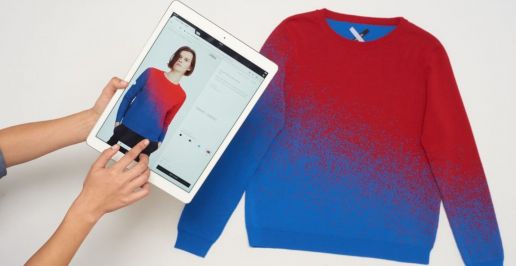
2. Fashion on Demand
Yes technology can finally support the need for fashion on demand. Technology is revolutionising what fashion on demand means. Once regarded as uneconomical, on demand fashion was once seen as impossible to achieve on a larger scale. The good news is that this is no longer the case since technology is now at a level that can support the rise of made-to-order and made-to-measure.
Therefore, fashion and textile businesses that want to create an on-demand supply chain can turn to new software, like the one provided by companies like Unmade, a London based startup that has worked with the likes of Christopher Raeburn and Avery Dennison. Offering convenience, fashion on-demand has also proven beneficial for fashion brands like New York-based Prabal Gurung, who have made the shift and now 25% of all their orders are now made-to-order.
Another great example is the knitwear company, Ministry of Supply. They have reportedly tested 3D printing knitted blazers and dresses and allowed their customers to choose different styles and colours. Within two days, the items were ‘printed’ and sent to customers. So again, innovation could mean that a fashion on-demand product could be delivered in the same amount of time as most fast-fashion labels, now that is progress.
3. Robotics
Want to implement robotics into your textile manufacturing process? Then read on. Groundbreaking advancements in recent years have allowed robotics in the textile industry to progress to the point where development has become highly advantageous for textile manufacturers. Ripe for transformation, robotics are becoming less of an obstacle and more of a technology that can positively transform the textile industry for the better.
As the automation wave continues to take over textile manufacturing, companies like Sewbo provide innovative solutions that support the automation of apparel manufacturing. Sewbo’s solution has been created to allow manufacturers to create higher-quality clothing at lower costs while shortening supply chains and lessening the long lead times that hamper the fashion and apparel industries. By helping to reduce the complexity of today’s intricate global supply network, the great thing about Sewbo’s technology is that it is suitable for a wide range of manufacturing applications.
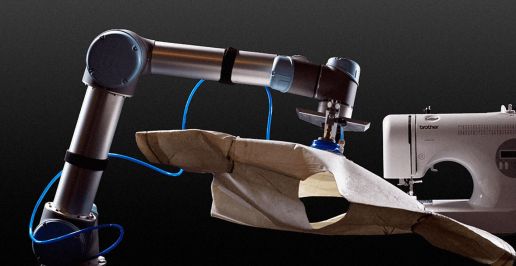
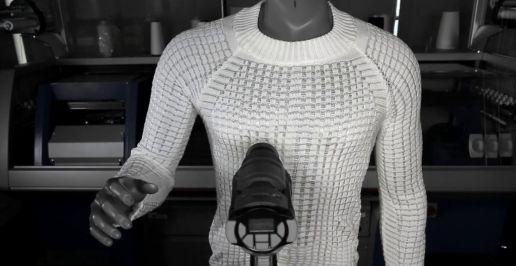
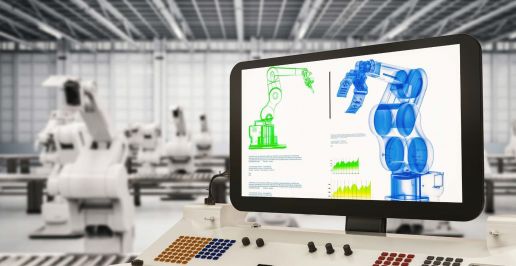
4. Machine Learning
A McKinsey report once stated that machine learning would reduce supply chain forecasting errors by 50% while also reducing lost sales by 65%. These numbers confirm that machine learning impacts textile manufacturing, especially in these three areas of business — operations, production, and post-production. Other great benefits of machine learning in manufacturing include improving product development, quality control, security and supply chain management.
Although some still argue that the technology is still in its infancy, those who have chosen to utilise machine learning fully have reduced their manufacturing costs and drastically improved product quality. Therefore, it is clear that using AI-powered systems in one’s manufacturing processes demonstrates that machine learning could bring numerous opportunities to enhance nearly every aspect of your business.

5. 3D Printing
Could 3D Printing be suitable for mass customisation? Well, some experts believe that 3D printing has the potential to help fashion and textile businesses who are looking to switch to an alternative customisable production method. Perhaps the biggest advantage of this type of tech tool is that it allows customisation choices to be implemented within the 3D file straight away before production.
If you are wondering whether there are any illustrative examples of fashion brands riding the mass customisation wave with 3D printing, the excellent news is that there is. Showing the way was the collaboration between Stratasys x Ganit Goldstein. Their partnership explored the melding of the traditional method with the latest 3D printing technology. “This is still a relatively new domain; we need to challenge ourselves to envision the next steps and to embrace this new design freedom to open up its true frontiers,” explained Naomi Kaempfer, Creative Director of Art, Design and Fashion at Stratasys.

ABOUT THE AUTHOR
Founding editor-in-chief of FashNerd.com, Muchaneta has worked in the fashion industry for over 14 years. She is currently one of the leading influencers speaking and writing about the merger of fashion with technology and wearable technology.
Muchaneta Kapfunde | editor@fashnerd.com
Antimicrobial Textiles, Hero or Hype
Antimicrobial Textiles, Hero or Hype?
AN INDUSTRY INSIGHT BY FASHNERD FOUNDER MUCHANETA KAPFUNDE.
In this new age of hypervigilance, a textile capable of effectively destroying viruses is currently a well sought-after unicorn. So much so that quite a few fashion brands have managed to create a buzz around antimicrobial textiles, materials infused with zinc and copper oxides of silver ions. Although antimicrobial materials cannot kill germs on contact, the ‘smart’ textile can effectively destroy viruses, which begs the question, can the fabric help with our current situation, Covid-19? Here are five takeaways about antimicrobial textiles.
1. The Rise of the ‘Sterilized’ Textile
Taking a broad-spectrum approach, antimicrobial fabrics were initially designed to prevent bacteria and fungi from growing. Traditionally reserved for particular uses in industries like healthcare, the increase in new antimicrobial fibre technologies has resulted in microbe-fighting agents being deemed safe enough for the fashion and apparel brands to add the technology to fabrics.
Taking a leap, a few fashion brands have started experimenting with sterilised textile marketed to the public as antimicrobial. With improvements still needing to be made, the Guide to Antimicrobial Fabric & Textiles by Apex Mills, explains that at the moment, the antimicrobial fabric merely slows down the spread of pathogens over time, not all of the textile is designed to kill spore cells on contact, supporting the theory that the innovation is not quite there yet.

2. Safe or Not So Safe
Are you skeptical of Antimicrobial textiles? That is not a bad thing because it wasn’t so long ago that it was suggested through studies, that silver nanoparticles, the most common ingredient in antimicrobial textiles, could form body issues that could potentially disrupt cellular processes or damage DNA.
Another concern that has been raised about antimicrobial textiles concerns recycling. It has been argued that when it comes to recycling, the innovative cloth could introduce uncertain chemical content that would threaten how the material is recycled. It is a valid concern that has raised many eyebrows among the more environmentally conscious designers.
So as brands like Burberry, who launched a line of antimicrobial masks in their signature check, race to appeal to anxious consumers, there must also be careful attention paid to asking the relevant questions about safety and the environment when it comes to the downside of antimicrobial fabrics.
3. Antimicrobial Textiles, Protection Not Guaranteed
Believed to protect and preserve with a ‘degree of effectiveness’, it is worth noting that not all antimicrobials are created equal. So how good is this super material?
Currently, there is no proof that antimicrobial technology will completely block viruses from surviving on textiles, rather just reduces the chances of transmission. Saskia Popescu, an infectious disease epidemiologist and assistant professor at George Mason University, told VOX: “There’s a lot of selling of products, based off fear, that really isn’t going to be effective.” A sound warning, so be aware of gimmicky textiles posing as super materials.
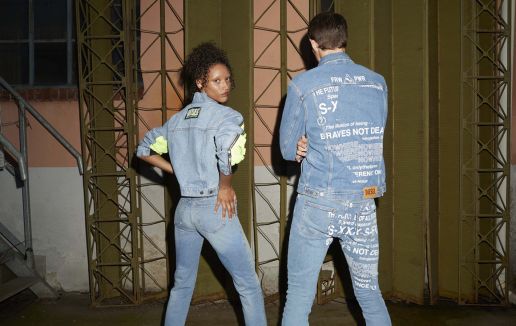
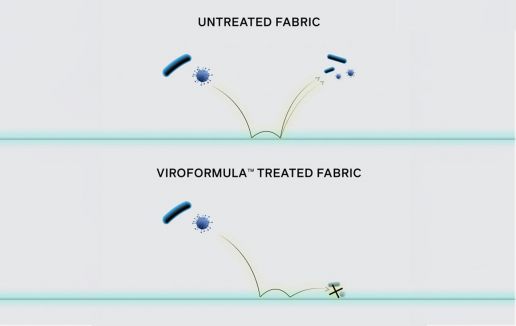
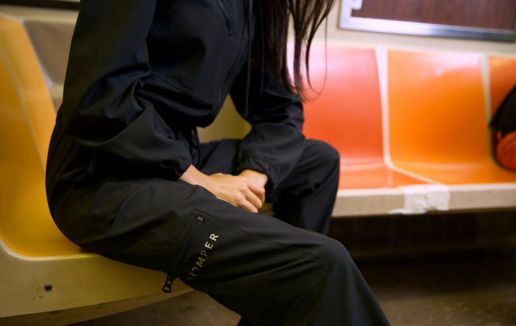
4. A Viable Gap in the Textile Market?
It should come as no surprise that the outbreak of the Covid-19 has resulted in an increase in R&D activities for antimicrobial textiles. Brands are already starting to introduce garments made of antimicrobial fabrics. A great example is the virus-fighting denim – a collaboration between Diesel and the Swedish chemicals company Polygiene. Using Viraloff technology, Polygiene’s treatment of the textiles reduces viruses by over 99 per cent on the material in two hours but the company advises users to “wash less and only when needed”.
Another new fabric launched in 2020 was Viroformula. Designed to “protect against viruses and bacteria” with cutting edge technology, the innovation was presented by the Albini Group, a material supplier for luxury brands like Tom Ford and Prada. Then there is BioRomper, an antimicrobial garment that blends fashion and function. The new super suit has been designed to eliminate cross-surface contamination during travel. The innovative romper is made of high-quality recycled materials that are sleek, stretchy with an antimicrobial finish.

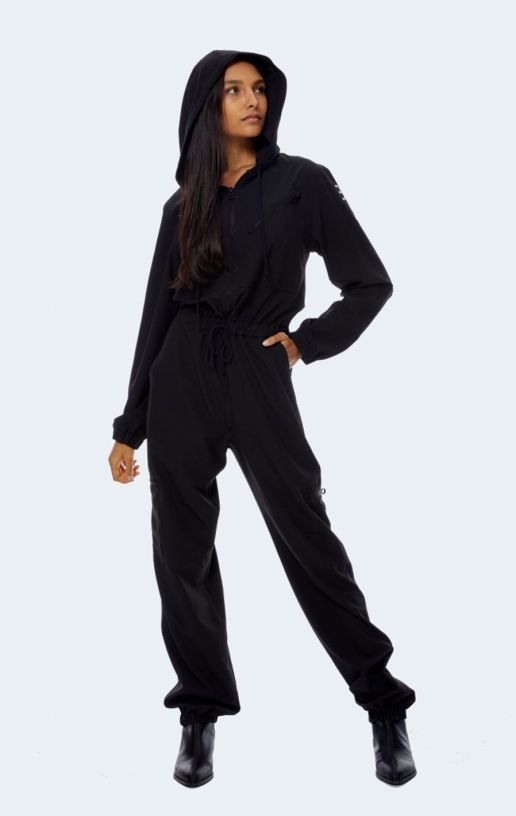
5. Can Antimicrobial Textiles Be Part of a Covid-19 Fighting Arsenal?
While there are some studies which suggest that antimicrobial textiles cannot effectively fight against viruses, HeiQ, a textile innovator who has been adding functionalities to fabrics since 2005, disagrees. Recently, HeiQ launched a mask made out of a material featuring copper technology that could deactivate the Covid-19 virus “in 5 minutes”, containing an ultra-thin pure copper coating applied via a high-tech vapour deposition process called HeiQ MetalliX. It converts a tiny amount of copper into vapour, allowing it to be deposited evenly to surround each fibre.
“Antiviral fabrics reduce the risk of virus transmission through surface contamination and are added protection from the virus.” Adding: “HeiQ does not want to make health claims and give people a wrong sense of security. Antiviral fabric is one factor in keeping people safe, but it needs to go hand in hand with other measures, such as keeping a social distance, wearing face masks when in crowded areas and washing hands regularly.” – Rahel Kägi Romero, Marketing Manager, HeiQ.
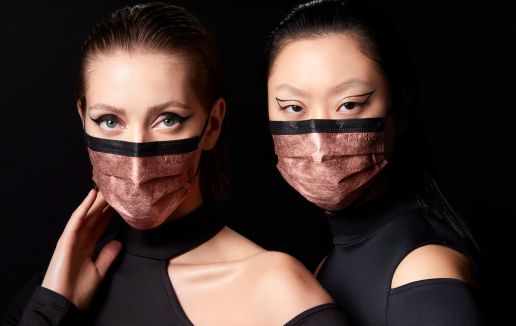

Believing in HeiQ’s material achievements is Warp + Weft. The brand, built on sustainability, partnered up with HeiQ to add the Swiss company’s antimicrobial textile technology to its fabrics. The self-sanitizing and germ-resistant surface were added to the softener during the laundering process of denim production. Even though this was an exciting partnership that showed how far antimicrobial materials have come, Sarah Ahmed, chief executive officer of Warp + Weft, told WWD that due to legalities and red tape, they could not legally guarantee that the fabric will protect against Covid-19.
If you are still unsure whether antimicrobial textiles are hero or hype, but you still want to try the innovation out, I advise you to first make sure you hop and skip past the gimmicky version of these textiles. Secondly, find out which antimicrobial agent the manufacturer uses. Lastly, keep your selection narrow, so you can test the market before rolling out your tech-infused textile product.

ABOUT THE AUTHOR
Founding editor-in-chief of FashNerd.com, Muchaneta has worked in the fashion industry for over 14 years. She is currently one of the leading influencers speaking and writing about the merger of fashion with technology and wearable technology.
Muchaneta Kapfunde | editor@fashnerd.com
Inclusive Sizing Technology
Inclusive Sizing Technology, Helping the Fashion Industry Represent the Underserved
AN INDUSTRY INSIGHT BY FASHNERD FOUNDER MUCHANETA KAPFUNDE.
With as many unique sizes as there are people on the planet, does it make good business sense for the fashion industry to continue to mass-produce 3 or 4 standard sizes? Yes, it is cost-saving, but with the new wave of body positivity breaking the sizing mould of yesteryear, maybe the time has come to move with the times. It is a positive thing to see the movement forcing fashion brands and retailers to turn to technology to meet most body shape needs and offer more than just standard basic styles.
Sizing Technologies, Worth the Investment?
Inclusive sizing technology is nothing new. Several solutions have been trying to correct the distorted and outdated image-standard designed to exclude plus-size consumers for a while now. Most famously was the ZOZOSUIT, a skin-hugging, high-tech bodysuit created to help shoppers purchase clothes, guaranteed the perfect fit every time. Now fast forward to 2021, and although sizing technology has advanced even further, shoppers are still struggling with common-fit issues. This begs the question, can fit technology fix fashions biggest demons, sizing and fit?
According to Narvar Inc, size and fit are among the top reasons customers return online orders. The e-commerce software company believes that this obstacle “further erodes retailers’ already thin profit margins”. Although it is a complicated problem, sizing technologies that offer a solution are being communicated to fashion businesses. One of those is 3D technology.

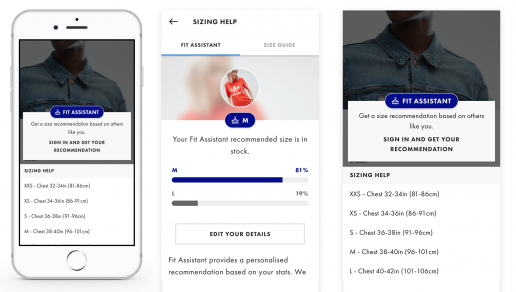
Revolutionising the fashion industry one label at a time, 3D technology is capable of helping fashion brands understand their consumer’s body shape so they can develop more accurate garments. One of those startups offering this type of innovation is CLO. On a mission to help the industry understand how ‘fit can build loyalty to a brand’, CLO 3D Simulation software feature allows brands to solve the question mark of their customer’s shape. Primarily built for cut-and-sew garments, CLO brags features like an API that enables customers to input their measurements to receive fit maps and view draped garments.
Fit Analytics is another solution. It is a technology that provides a “Fit Score” generated by response comparisons. CEO of Fit Analytics Sebastian Schulze believes that fashion brands cannot simply scale existing apparel specifications to create plus-size garments; they need fit technology to help them empower consumers and fix a decades-old problem.

Also worthy of mention is the digital fit solution app MySizeID. The direct to retailer technology helps consumers assess a garment’s sizing. Denim brand Boyish Jeans partnered up with MySize and saw a reduction of more than 30 per cent in two months. How? Well, the app’s AI-driven technology works by analysing user-entered data, like weight, gender or height, and then MySize’s proprietary machine learning database calculates the appropriate size. On their technology, Ronen Luzon, MySize CEO and founder told Sourcing Journal:
“Our app was designed specifically to take the guesswork out of sizing and make things as convenient as possible for online shoppers, so enabling customers to utilise our sizing recommendations and navigate directly from our app to retailers’ sites is a natural step for us when it comes to working directly with the consumer”.
Looking ahead, MySize is hoping to offer the same solution it does to the apparel industry to the footwear industry.
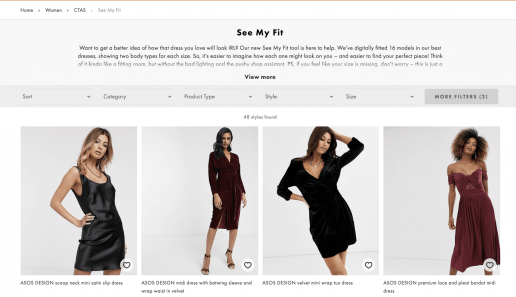
Yes, Fit Technology Has Gone Mainstream
When Lizzo, Ashley Graham and Meghan Trainor brought the inclusive sizing movement to the mainstream, fashion brands began to understand that they were walking away from profit by underserving a specific demographic. One of those brands was ASOS. Last year, in 2020, the British online fashion and cosmetic retailer trialed an augmented reality tool in collaboration with Israeli augmented reality (AR) company Zeekit to expand their offerings. “See My Fit” allowed ASOS customers to view 800 dresses on 16 different models, sizes 4 to 18, which heralding the online retailer as being at the forefront of fashion inclusivity. When released, Tim Carey, senior content manager at ASOS Studios, told NBC News:
“With this trial of See My Fit, we’re using the latest in AR technology to put the power in our customers’ hands, so they can choose to view a dress on the model that they most identify with, in a way that wouldn’t be possible using traditional model-shooting techniques.”

Then there is Vero Moda, a fashion brand that worked with Presize. It is a fit solution that can be integrated with zero IT capacity. After applying the technology to its online store, the fashion brand saw an increase in its online revenue.
When it comes to reliability, Presize states on their website that a study conducted with 255 participants found that the startup showed greater body measurement accuracy for 90% of all subjects and scored a mean average error 55% lower than that of the second most accurate solution in the benchmarking.
Empowering fashion brands to offer a more personalised sizing experience is ZyseMe, a Germany based startup driven by a desire never to allow customers to compromise on fit. It is a solution that has been successfully cutting overproduction, waste and returns. In 2021 they partnered up with H&M. Together, the two companies offered on-demand production of men’s shirts with H&M LAB. Using AI algorithms, they generated a unique pattern for a shirt produced on demand and sent directly to the consumer. ZyseMe is now expanding to partner with several other retailers and brands.
Finding The Perfect Fit, A Sign of Changing Times
Doesn’t it make good business sense for fashion brands in this challenging market to not alienate the next generation of consumers? Fit-related innovation has proved to be the best way to meet the demand for size “ideals’ that do not skew towards smaller products while also fighting the growing number of returns and unnecessary overproduction.
Yes, fit technology might not have cracked the code to the perfect fit, but you should believe the hype because as the technology evolves, it is coming closer to promising “perfection and personalisation” than ever before. Acknowledging the existence of inclusive sizing solutions is no longer enough; adopting, adapting and executing them is.

ABOUT THE AUTHOR
Founding editor-in-chief of FashNerd.com, Muchaneta has worked in the fashion industry for over 14 years. She is currently one of the leading influencers speaking and writing about the merger of fashion with technology and wearable technology.
Muchaneta Kapfunde | editor@fashnerd.com
Towards 3D Digital Innovation
3D Digital Innovation: Transitioning From Physical to Digital
AN INDUSTRY INSIGHT BY FASHNERD FOUNDER MUCHANETA KAPFUNDE.
As business practices in various sectors adjust to accommodate digital innovation, the textile industry has also started to shift direction. Driven by the growing need to rethink the industry’s approach to design, development and manufacturing, the textile business has finally started to turn to digital technology to help solve some of its industry-specific difficulties and complexities.
Under pressure to innovate, I am excited to witness 3D digitalisation finally taking centre stage in the textile industry. Propelled forward by the brand-new digital wave, textile businesses are setting new standards to future-proof the sector. Rethinking how they operate, more and more textile businesses are becoming less afraid to explore the benefits of transitioning from physical to digital. The majority are doing this by examining the advantages of merging textiles with digital experimentation. So, what exactly is 3D digital technology offering an industry notorious for being resistant to change?
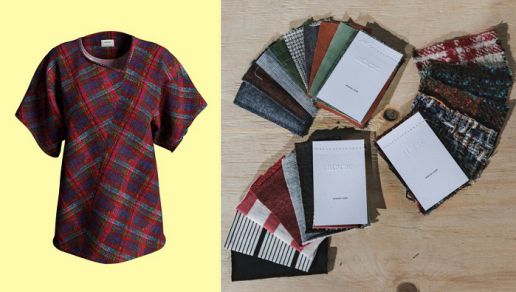
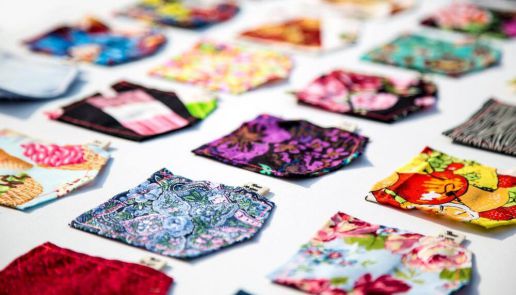
The Digitisation of Fabrics, A Powerful Asset?
Modern technologies are proving to be an influential asset when it comes to playing an integral part in changing the dynamics of the textile industry. With the potential to give textile businesses a competitive edge, we are starting to see 3D digital innovations being highlighted at textile trade shows, which, in my opinion, is a step in the right direction.
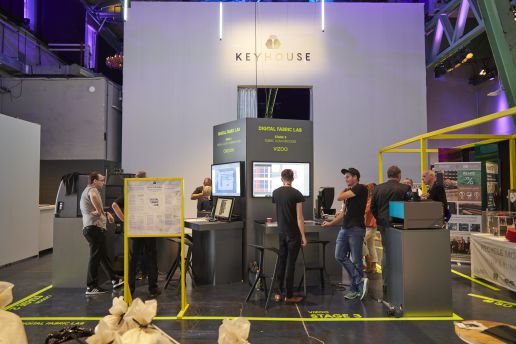
This is an opinion formed while frequenting various textile trade shows. As a regular visitor I am familiar with physical swatches. Now imagine if I, as a visitor (or customer), could access the digital twin of a piece of fabric along with its physical swatches. This concept was introduced at Munich Fabric Start (MFS) trade show during their 2019 edition of KEYHOUSE.
The Munich based trade show showcased fabric suppliers offering a digital twin alongside physical swatches. Partnering up with Digital Fabric Lab, they demonstrated the individual steps of fabric digitisation and how textile businesses can create a realistic image of digital fabric samples. The key takeaway was that physical no longer needs to be the master copy. More recently, in 2021, MFS invited attendees to indulge in 3D digital fabrics and trend inspirations showcased at their DIGITAL TREND SPACE.
PHYSICAL NO LONGER NEEDS TO BE THE MASTER COPY
Another digital platform making it possible to digitise fabric is Esmetex. “We aim to simplify the fabric development process; no more looking through swatch boxes and shipping swatches back and forth“, said the founder of Esmetex, Victor Chao, to Apparelresources.com. Adding:
“It is not practical for a designer to search through 18,000 fabric swatches when Frontier® can search based on whatever criteria the user is interested in and return all relevant fabric information on one page. This can be done on a desktop, laptop, tablet or smartphone by accessing our website or by installing our app.”
Chao is not alone in trying to help the textile industry move with the times. Emily Croneberger, manager marketing and industry programs, Cotton Inc, said in an interview:
“Digitising the fabrics is our first step in keeping cotton in a digital landscape”. She continued: “We have committed to creating an online digital library of our fabrics, free for download and use by brands, mills and accounts. We plan to move forward in promoting and expanding our digital assets.”
Although it is unlikely that physical samples will become a thing of the past anytime soon, the digital twin of fabric offers some advantages, like storing all fabric data in one central place. It is also worth taking note that solutions offered by digital material platforms like Swatchbook, also make it easier to verify the physical textiles’ authentication. For those attending shows, this type of tech solution makes viewing the fabrics more effortless while helping textile businesses be less wasteful when it comes to physical material samples and swatches.
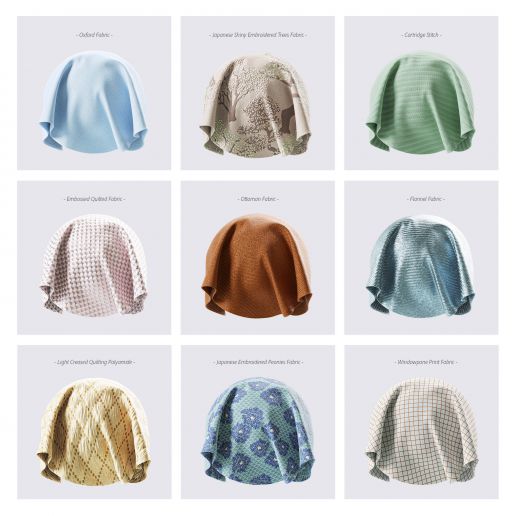
The Wonder Of Digitally Transformed Fabric
As industries transform to meet global changes, we have seen a rise in the adoption of newly emerging technologies. It is these genius ideas that have allowed the textile industry to take material digitisation to the next level. By hybridising the physical world with the digital one, textile companies that once relied on physical meetings at trade shows are now turning to innovative textile technologies to help them digitally transform their fabric during the global pandemic. One of these solutions is Scanatic™ Nuno Fabric Scanner provided by tg3ds.
Digitally powering the textile industry, the tg3ds studio uses an intelligent imagery processing engine to capture 3D texture display properties of fabrics in the smallest digital footprints. Another solution provider is Twinbru. They have made a name for themselves by setting an industry standard when it comes to making it possible for digital fabrics to be used in all virtual settings, like AR, VR and even game design.
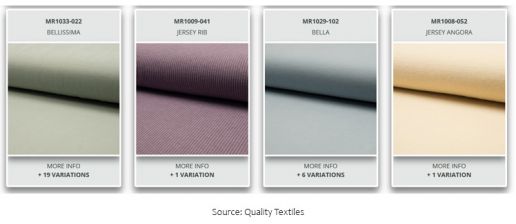
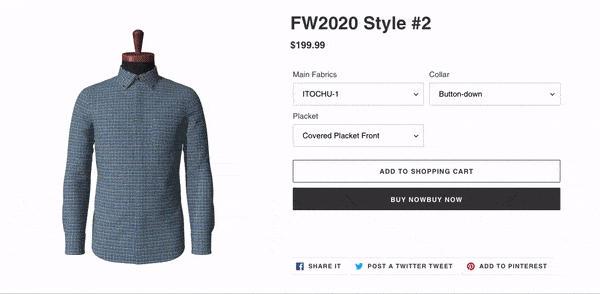
Ready for Limitless Possibilities?
When the world of “all things digital” merges with one of the oldest industries, you know it’s time to stand up and take notice. If you are a fabric mill, a garment manufacturer, or a textile brand, now is the time to leave outdated methods behind and transition your product from physical to digital. For example with help from companies like CLO Virtual Fashion, who can accurately emulate drape-sensitive fabrics such as lightweight wovens and jerseys with various material properties, more on this here. Yes, there are still imperfect kinks to the technology, like not being able to mimic complex behaviour of materials, but that does not make innovations like 3D Digital plan B; it should always be ‘the plan’.
So why embrace digital transformation? If you want to become faster, more relevant and more cost-efficient, now is the time to capitalise on all the possibilities that digitalisation offers. Yes, some might argue that the technology is not industry-ready enough to replace physical samples with virtual ones, but we can all agree that a new textiles economy is arising, and it makes sense to be a part of it.

ABOUT THE AUTHOR
Founding editor-in-chief of FashNerd.com, Muchaneta has worked in the fashion industry for over 14 years. She is currently one of the leading influencers speaking and writing about the merger of fashion with technology and wearable technology.
Muchaneta Kapfunde | editor@fashnerd.com
The Power of Headless Commerce
Why Fashion Businesses Should Harness the Power of Headless Commerce
ARTICLE BY MUCHANETA KAPFUNDE, FOUNDING EDITOR-IN-CHIEF FASHNERD.COM
In today’s world, it is hard for any industry to ignore the explosion of innovation, let alone the growth of its adoption. Even the fashion industry, which has always been hesitant to invest, started in 2020 to seriously take note when it became apparent that the fashion industry’s overall health was now reliant on its ability to adapt to new ways of doing business. Switching to survival mode, brands and retailers, especially those who have been dealt a tough hand due to the pandemic, started diving into innovations designed to get them back on track. One of these best-in-class technologies is headless commerce.
Born from what RetailDive described as “retailers’ struggle to create an online purchasing experience that was consistent with the slick marketing customers were used to seeing”, headless commerce has been proving to be more than just another buzzword. Although it has been acknowledged by luxury labels like Lancome and Michael Kors, who are using the solution to run their eCommerce stores, the question remains, what is headless commerce?
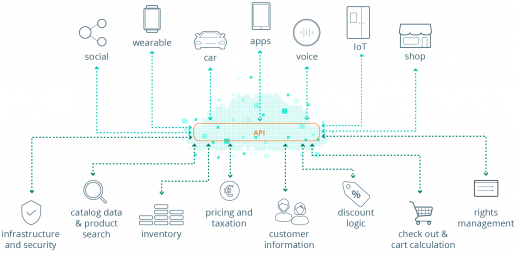
The Rise of Headless Commerce
For some businesses, it was the enforced disruption of 2020 that brought headless commerce to their attention. If you are hoping to take advantage of what headless commerce can bring to the table, you need first to understand what the solution is. The idea behind Headless is pretty simple. It is the decoupling of the front-end and the back-end of a brand’s e-commerce solution. The front-end is what your customers see when they are interacting with your store. The back-end, which is responsible for all of the functionality, is what the customer never sees.
Now, most e-commerce solutions have their back-end and front-end coupled, which means that any changes requiring a developer to configure code to account for those changes – turning a small project into a big one; and this is when headless commerce comes in. Shaneil Lafayette, Commerce Technology Advocate and Data Analyst, explains: “Headless commerce is a solution that allows you to innovate and add new customer touchpoints without ever having to worry about messing about functionality in expectations”. Adding: “You can add new and personalised commerce experiences to keep up with customer expectations”.
Not an entirely new approach, Nacelle, a company that helps businesses create next-gen web stores by offering headless functionality as a solution, defines headless commerce as an innovation that allows retailers to scale their e-commerce business. More technically, headless commerce is “the decoupling of a website’s front-end from the back-end and implementing an API architecture that enables making fluid changes to the site’s content and user interface elements without affecting the back-end”, according to Algolia, a search-as-a-service platform.
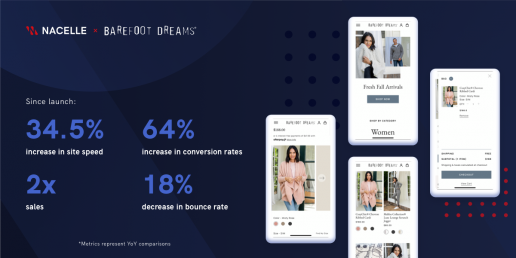
Although brands like Oliver Bonas, Etsy, J.Crew, and ASOS are adopting headless solutions, some brands and retailers are still trying to understand why this ‘future-proof’ package is on the rise. One argument offered by ‘Content And Commerce: The Odd Couple Or The Power Couple?’ authors Stephen Powers and Peter Sheldon is: “It is no longer enough to enable an online catalogue and transactional e-commerce.” A valid point. So taking it one step at a time, to understand why headless is on the rise, I think one needs first to understand the difference between traditional commerce and headless commerce.
Traditional Versus Headless
Before pointing out the difference between traditional or headless, allow me first to say, although headless commerce has its advantages, traditional e-commerce website solutions are always great for those starting or those looking for an easy setup that requires less financial investment. But if you are past that stage and want to take the next step, then headless commerce could be the progressive solution that makes it easier for your business to present experiences and test new strategies.
Let’s start with the front-end. It has been said that when it comes to the front-end, traditional commerce platforms have a reputation for having design constraints that limit developers. This hindrance is usually not experienced in headless commerce. That is not to say that headless commerce doesn’t come with its drawbacks, it does, but with perks that include advantages that enable front-end developers to create, from scratch, a user experience that fits core business needs, the benefits currently outweigh its limitations.
When it comes to customisation, the traditional commerce platform affords limited personalisation, while headless platforms offer developers the opportunity to create their own user experience. By this, I mean that headless commerce is built for customisation, which means that it is a solution that makes it easier for you to rearrange your store or change content as and when you need to.
Ready To Be Free From Traditional Shackles?
Joe Cicman, a Forrester Senior Analyst, once said: “If you rewind the clock to the pre-headless days, you could spend millions of dollars figuring this stuff out for yourself”. The good news is that experts at Amplience have come up with a playbook that offers fashion businesses an opportunity to break down traditional barriers. Supporting headless commerce as an innovative solution, Amplience’s playbook explains the whys, what’s, and how to go headless.
Still wondering if you should get in on the action? Let’s go through some advantages of adopting this modern commerce architecture. It is a solution that gives you the ability to deploy, scale and provide an accurate omnichannel approach. As Harvard Business Review research revealed, this is important because omnichannel customers spend 4% more in-store and 10% more online than single-channel customers. Also that 73% of consumers use more than one channel during their shopping journey.
Another advantage of going down the headless route is the faster speed to market aspect, a must in an industry that thrives on speed and agility. Also, headless commerce can help brands adapt quickly to market changes and implement recent UX changes, like adding new functionality without changing the back-end logic.
Lastly, the most significant advantage has to be headless commerce’s ability to make it possible to build a store that is tailored to a fashion business’ needs. Imagine being able to create an all-in-one-platform that is not a clunky and outdated operation but a seamless system that ticks all your boxes and allows your customers to experience your brand’s overall aesthetic with ease.
Let's Talk Challenges & Whether Headless Is a Best-of-Breed Solution for You
Considering some experts to be a long-overdue upgrade, should you decide to join the headless tribe, you won’t be alone. As I mentioned earlier, Michael Kors shifted to a headless architecture in 2016. The benefits for the American fashion label include streamlining their efforts to engage with mobile users. Also, in 2016 French luxury perfumes and cosmetics house Lancôme transitioned to headless to capitalise on its increased mobile traffic. Following their evolution, Lancôme reported a 36% lift in mobile revenue and an average order value increase of 11%.
Like any emerging innovation, headless commerce comes with limitations. Not a quick solution for every retailer, headless commerce’s initial build costs and times can be relatively high, not to mention the ongoing costs. This is probably why larger organisations have mainly adopted headless commerce with the resources to commit to it. Some smaller businesses have taken a step towards going headless because, in the long run, they are looking at the bigger picture and thinking long term when it comes to their expectations of ROI.
In the end, yes, headless unlocks opportunities, but it is not suitable for everyone. It is a solution that offers excellent benefits if you are looking to bring specific traits to your overall business approach. Still, before you commit, you need to ask yourself, do I want to increase conversions? With mobile-first on the rise, is now the time to optimise my store for mobile shopping experiences? Are modern tools the way forward for my business? If you answered yes to all three questions, then headless could be the solution to help you to scale up and grow faster. Solutions like Mobify, Prismic, Algolia, Magento 2, Shopify Plus and Core DNA could help you make the switch in gradual increments.
So as we propel towards a new retail age in 2021, the fashion industry has started to realise that the road back to “normality” is paved with complex and sometimes intimidating innovation. Joining the dots between digital and physical not only opens the industry to viable solutions that reduce the impact caused by COVID-19, but it is technologies like headless commerce that will help fashion brands and retailers grab a more significant piece of valuable market share that will allow them to thrive post-pandemic.

ABOUT THE AUTHOR
Founding editor-in-chief of FashNerd.com, Muchaneta has worked in the fashion industry for over 14 years. She is currently one of the leading influencers speaking and writing about the merger of fashion with technology and wearable technology.
Muchaneta Kapfunde | editor@fashnerd.com
Why It's Time For A Digital Intervention
Why It's Time For A Digital Intervention
ARTICLE BY MUCHANETA KAPFUNDE, FOUNDING EDITOR-IN-CHIEF FASHNERD.COM
In an increasingly digitised world, the present-day landscape for fashion businesses is changing. The technology tinkerers and digital blacksmiths are challenging the traditional way of designing. Digital activity is no longer just focused on sales; instead, there is a new digital approach transforming existing design practices. Reimagining the process of designing, creating and showing garments, digital tools are arming designers and brands with technology created to eliminate the manual steps usually taken in the traditional fashion design cycle.
A Digital Approach To Garment Creation
With optimism towards technology growing, more brands are becoming open to adopting new business models and beginning to find their footing in the digital economy. As we enter 2021, more fashion designers are starting to understand why digitally managing the back end of their business is essential which has meant that we are hearing less of “We know digital is important, but…”. Through digital intervention, fashion businesses are not only altering how they operate day-to-day, they are also taking a step back and thinking about how digital tools could add value to their business.
Moving towards a more digital model presents exciting opportunities, especially for fashion houses, grappling with how to move forward post-pandemic. Created to enhance what we want to achieve long term, committing to the digital process will not only eliminate multiple rounds of pattern-making and model fittings; it will also allow fashion brands to identify and unlock opportunities. Yes, going digital can come with a few uncertainties, but with everything going on, there has never been a more perfect moment to change your internal mindset.
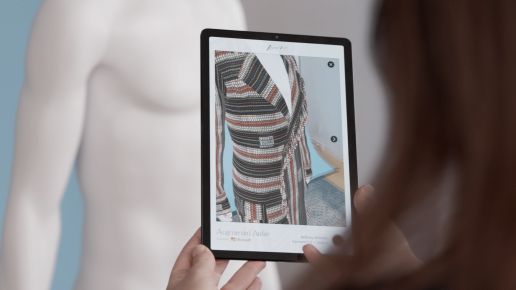
Be Inspired To Innovate and Push the Boundaries
Taking a visionary approach is founder of fashion magazine More or Less, Jaime Perlman. Last year the former Vogue UK creative director teamed up with Microsoft to launch ‘Augmented Atelier‘. The partnership was designed to advocate new tools for an alternative take on design. “It’s really about using technology as a form of imagination and how that reacts with the real world in a physical space. It’s about using technology to innovate and push the boundaries of what fashion can mean,” explained Jaime Perlman on the Microsoft.com blog.
Harnessing the capabilities of Microsoft Azure Spatial Anchors, Pearlman is not defying traditional methods independently; she has Bethany Williams, Phoebe English, Fredrik Tjærandsen, and Rottingdean Bazaar as part of her tribe. Working together, they have been busy bringing forward tools that offer the kind of solutions that bring sustainability, innovation and imagination to the forefront of the industry.
Defining Your Place In The Digital Economy
Streamlining the design process, pushing boundaries and reshaping attitudes, taking a digital approach to garment creation is not a radical choice but a necessary one. Although the digital journey can be challenging, more and more innovative tools are growing in prominence and being introduced to the industry. It is these tools that are giving fashion brands a better understanding of the opportunities that they present. Yes, digital technology is making it easier for fashion businesses to move towards a more digital model, but the question now is, are you, as a business, ready to embrace the change taking place in the industry?
With startup designers leading the way and defining their place in the digital economy, some still hesitate. If you are unsure if digital tools are the way forward, imagine this, having the ability to transfer real-life fabrics to your design. The good news is that you do not have to imagine anymore, thanks to The Scanatic™ Nuno3D Service. Digitally empowering fashion, the company offers a solution that allows for realistic fabric visualisation by rendering the fabric scan in the most true-to-life. It is an invention that enables designers to import different texture maps, like knitted fabrics, woven fabrics, synthetic fabrics etc.
Then there is CLO. Promising to revolutionise the design process by combating inefficiencies within the fashion industry, CLO is a software that can transform a brands workflow. With CLO, brands could bring their business presence to the next level. Offering true-to-life 3D garment simulation, CLO addresses today’s challenges by providing an efficient 3D design process. By guiding the fashion industry towards a future where designers can seamlessly integrate 3D into their operation, CLO makes it possible to virtualise a garment and transform a designer’s entire workflow.
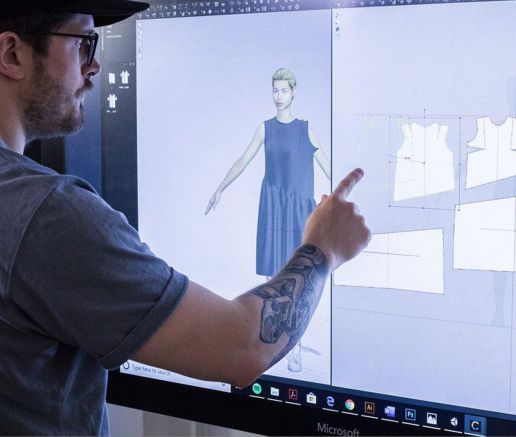
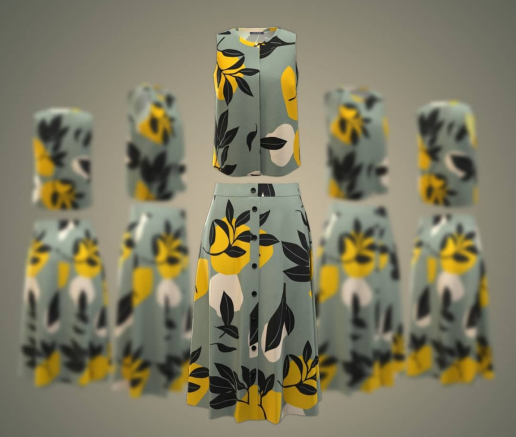
A firm favourite is TUKATECH. The software company has two digital fashion products, TUKAcad and TUKA3D. Created for designers looking to streamline their production process, the software eliminates the need for physical samples and makes it possible to create life-like digital collections. One of the critical features of TUKA3D is that it includes 3D virtual sampling in 5 visual ways, real-life virtual fit sessions and fabric and trims library.
Last but not least is Virtuality.Fashion. Driven to bring your fashion ideas to life, the company has made sharing creations virtually without sending physical samples easy breezy. Powered by C-Design, the collaborative platform makes sharing and collaborating with potential buyers or internally much more straightforward.
Digital Tools, The Ultimate Must-Have?
Presenting new opportunities for an industry that needs to change – digital tools are becoming the ultimate must-have for fashion businesses ready to transform existing design practices. More affordable than ever before, the good news is that the adoption of full-fledged digital solutions has gone from pleasant to have, to need to have. As we enter 2021, the fashion brands that are taking this positive step in the chaotic upside-down world we are currently doing business in are most likely going to be around for the long run, and for those who are reluctant to adopt digital tools, some experts predict that soon it will be too late.



